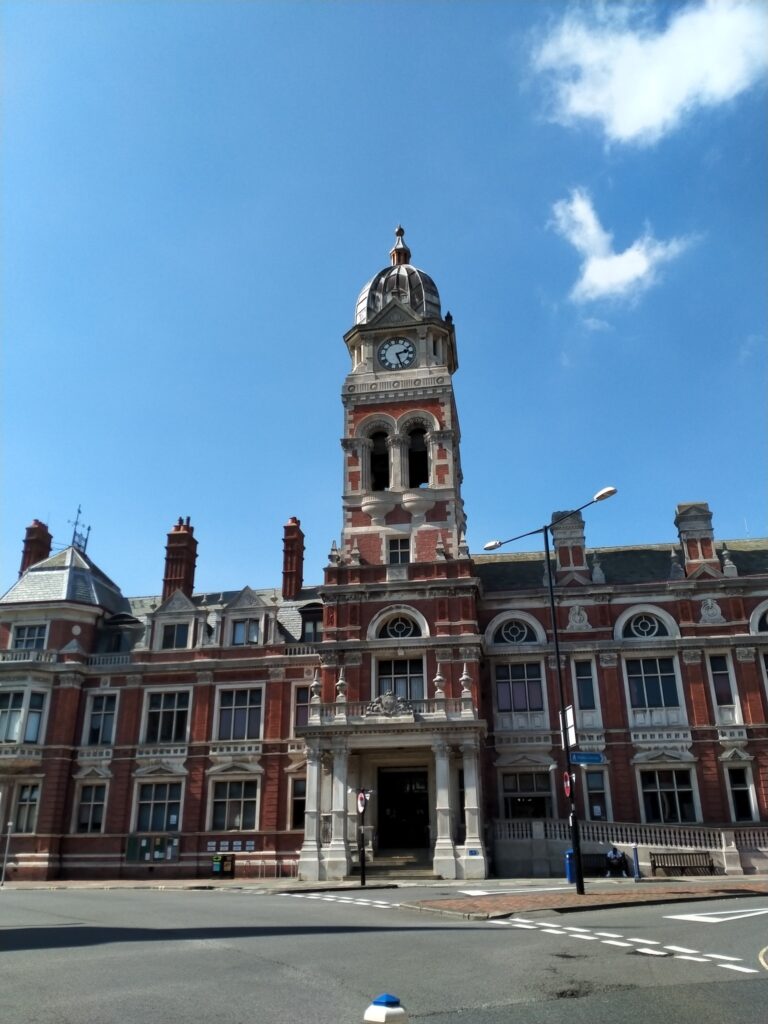By Tim Lambert
Early Eastbourne
For centuries Eastbourne was a large village. The people lived by farming or sometimes by fishing. However, in 1232 Eastbourne was granted the right to hold markets and fairs. (In the Middle Ages fairs were like markets but they were held only once a year and they attracted buyers and sellers from far and wide).
At the end of the 16th century, Eastbourne was called a market town but it was really a large village. To us, it would seem tiny. It probably had a population of less than 1,000.
Little changed in Eastbourne until the late 18th century. At that time people believed that bathing in seawater was good for your health and could cure disease. It became fashionable to stay at the seaside. In 1780 George III’s children stayed at Eastbourne.
Eastbourne in the 19th century
However, in the early 19th century Eastbourne only grew slowly. In 1851 it had a population of less than 3,500.
Wish Tower was built in 1804. It is a Martello Tower, one of a chain of forts built on the South Coast as protection against Napoleon.
Then in the second half of the 19th century, Eastbourne changed dramatically. In 1849 the railway reached Eastbourne, making it easier for visitors to reach the town.
However, Eastbourne was largely created by two landowners, the Duke of Devonshire and a man named John Davies Gilbert. Both built many new houses and the population boomed. By 1871 Eastbourne had over 10,000 people.
Amenities in Eastbourne improved in the 19th century. In 1851 Eastbourne gained gaslight and in 1859 a water company was formed. In the late 19th century sewers were dug and in 1863 a dispensary opened in Eastbourne where the poor could obtain free medicines.
A pier was built at Eastbourne in 1872 and Devonshire Park opened in 1874. Devonshire Park Theatre opened in 1884. Meanwhile, in 1883 Eastbourne was granted a corporation and a mayor. Eastbourne Town Hall was built in 1883.
Eastbourne in the 20th century
In the 20th century, Eastbourne flourished. Hampden Park was laid out in 1901. By then the population of Eastbourne was nearly 43,000. During the 20th century, the population of Eastbourne continued to grow rapidly. By 1951 the population of Eastbourne had risen to 57,000.
The Italian Gardens opened in 1905. Meanwhile, Eastbourne Technical Institute was built in 1904 and Towner Art Gallery opened in 1924. A workhouse infirmary became St Mary’s Hospital in 1930 and a Lifeboat Museum opened in Eastbourne in 1937.
Meanwhile, the writer Margaret Rumer Godden was born in Eastbourne in 1907.
During World War II Eastbourne suffered severely from German bombing and altogether 174 people were killed.
However, after the Second World War Eastbourne recovered and flourished as a seaside resort. The Congress Theatre was built in 1963. Redoubt Military Museum opened at a fort in Eastbourne in 1977. Towner Art Gallery opened in 1983.
Eastbourne is also a shopping centre. The Arndale Centre was built in 1980.

Eastbourne Town Hall
Eastbourne in the 21st century
In the 21st century, Eastbourne is still flourishing. The Towner Art Gallery opened in Eastbourne in 2009. However, the Eastbourne pier was severely damaged by a fire in 2014. In 2023 the population of Eastbourne was 103,000.